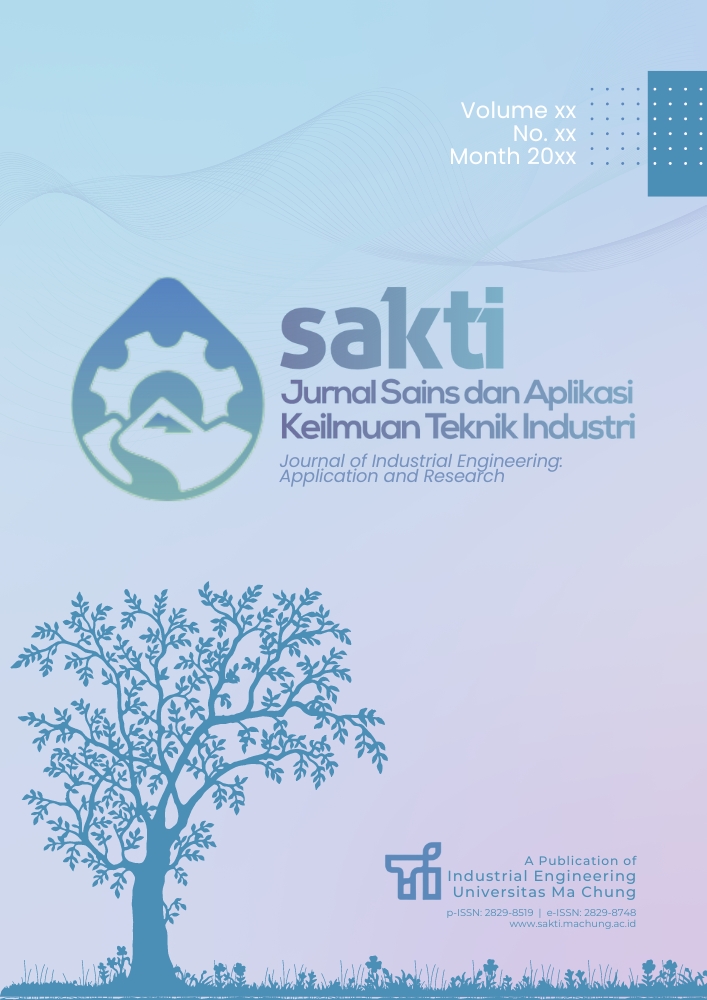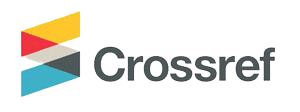Towards the X-shaped Person, the Next (Industrial) Leader in the Era of Industry 4.0 and Society 5.0
DOI:
https://doi.org/10.33479/sakti.v4i2.53Keywords:
X-shaped person, T-shaped person, Industry 4.0, Future industrial leaderAbstract
This paper examines the impact on the development of industry and society known as industry 4.0 and society 5.0. Caused by technological and business pressures influenced by the rapid development of digital technology. Industry 4.0 and society 5.0 require the type of person who has digital literacy as well as leadership abilities to lead the industry in an uncertain market situation that can have an impact on disruption. Therefore, to ensure the sustainability of the industry, the type of person who is able to lead the industry through increasing business pressures and strategic environment is needed. This paper evaluates and assesses three shaped of person called I, T, and X on factors related to industrial sustainability, especially in the future due to industry 4.0. The assessment results show that X-shaped person has the highest score of 3.75 compared to I with a score of 1.31 and T with a score of 2.66. This result is specifically influenced by the leadership factor because it has the highest weighting factor of 0.34 for this assessment. This paper proposes an X-shaped person development method both through internal and external programs such as the Leadership Development Program (LDP) or government leadership program held by the National Resilience Institute of the Republic of Indonesia (Lemhannas RI). It is concluded that the X-shaped person is important to be developed for the sustainability and competitiveness of industry today and in the future.
References
Baskoro, G. (2023). From VUCA to BANI: A Challenge of Strategic Environment for Higher Education in Indonesia (pp. 229–235). https://doi.org/10.2991/978-94-6463-216-3_18
Baskoro, G., Sarwono, E., Subekti, G. A., Hendriana, D., & Nasution, H. (2024). Selection for technology acquisition using AHP: a case study of Tulip VAWT effectiveness. Jurnal Teknik Industri, 25(1). https://ejournal.umm.ac.id/index.php/industri/article/view/28606
Bassano, C. (2018). Management of Human Resources inside Open Innovation Organizations: Some Reflections. Ergonomics International Journal, 2(2), 1–9. https://doi.org/10.23880/eoij-16000136
Buxton, B. (2009). Innovation Calls For I-Shaped People. Bloomberg UK, 2009, 1–3. https://www.bloomberg.com/news/articles/2009-07-13/innovation-calls-for-i-shaped-people?leadSource=uverify wall
de Godoy, M. F., & Filho, D. R. (2021). Facing the BANI World. International Journal of Nutrology, 14(02), e33–e33. https://doi.org/10.1055/s-0041-1735848
Deguchi, A., Hirai, C., Matsuoka, H., Nakano, T., Oshima, K., Tai, M., & Tani, S. (2020). What Is Society 5.0? In Society 5.0 (pp. 1–23). Springer Singapore. https://doi.org/10.1007/978-981-15-2989-4_1
Dekoninck, E., & Bridge, L. (2023). the T-Shaped Design Engineer - Using Cohorts To Explore How Skills Profiles Differ Through Career Stages. Proceedings of the Design Society, 3(July), 3533–3542. https://doi.org/10.1017/pds.2023.354
Elfandi, A., Yohana, C., & Fidhyallah, N. F. (2021). Faktor-Faktor yang Mempengaruhi Intensi Berwirausaha pada Mahasiswa Universitas di Jakarta. Jurnal Bisnis, Manajemen, Dan Keuangan - JBMK, 2(1), 228–240. http://pub.unj.ac.id/index.php/jbmk/article/view/236
Evseeva, S., Evseeva, O., & Rawat, P. (2022). Employee Development and Digitalization in BANI World (pp. 253–264). https://doi.org/10.1007/978-3-031-14985-6_18
Fletcher, A., Gaines, T. L., & Loney, B. (2023). How to be a better leader amid Volatility, Uncertainty, Complexity, and Ambiguity. https://hbr.org/2023/09/how-to-be-a-better-leader-amid-volatility-uncertainty-complexity-and-ambiguity?utm_medium=paidsearch&utm_source=google&utm_campaign=intlcontent_leadership&utm_term=Non-Brand&tpcc=intlcontent_leadership&gad_source=1&gclid=CjwKCAjwydSzBhBOEiwAj0XN4F9gywgMK7_I38dgbMiSGUd9f_ygngPiSp-mxxcJxivwTtVVhoCRUhoC5WMQAvD_BwE
Fukuyama, M. (2018). Society 5.0: Aiming for a New Human-Centered Society. Japan SPOTLIGHT, August, 47–50. http://www8.cao.go.jp/cstp/
Gibson, H. O. (2021). T-Shaped Managers – One Size Does Not Fit All : Exploratory Study from the Military T-Shaped Managers – One Size Does Not Fit All : Exploratory Study from the Military (22–003). https://www.hbs.edu/ris/Publication Files/22-003_f56969f7-1423-45f0-a5b0-008f90d877fe.pdf
Hammer, M., Harris, M., Ramnane, K., & Blackwell, E. (2021). Ops 4.0—The Human Factor: A class size of 1. McKinsey & Company. https://www.mckinsey.com/capabilities/operations/our-insights/operations-blog/ops-40-the-human-factor-a-class-size-of-1
Hollister, R., Tecosky, K., Watkins, M., & Wolpert, C. (2021). Why every executive should be focusing on culture change now. https://sloanreview.mit.edu/article/why-every-executive-should-be-focusing-on-culture-change-now/
Kagermann, H., Wahlster, W., & Helbig, J. (2013). Securing the Future of German Manufacturing Industry: Recommendations for Implementing the Strategic Initiative Industrie 4.0. Final Report of the Industrie 4.0 Working Group. https://www.din.de/resource/blob/76902/e8cac883f42bf28536e7e8165993f1fd/recommendations-for-implementing-industry-4-0-data.pdf
Law, N., Woo, D. J., & Wong, G. (2018). A Global Framework of Reference on Digital Literacy Skills for Indicator 4.4.2. https://uis.unesco.org/sites/default/files/documents/ip51-global-framework-reference-digital-literacy-skills-2018-en.pdf
Martin, A. (2006). Literacies for the digital age: London: Facet.
McKinsey. (2016). Industry 4.0 after the initial hype. Where manufacturers are finding value and how they can best capture it. https://www.mckinsey.com/~/media/mckinsey/business functions/mckinsey digital/our insights/getting the most out of industry 4 0/mckinsey_industry_40_2016.ashx
Murgatrotd, S. (2024). Leadership in a VUCA | BANI World. https://www.researchgate.net/publication/380163478_Leadership_in_a_VUCA_BANI_World
Narcizo, R. B., Canen, A. G., & Tammela, I. (2017). A conceptual framework to represent the theoretical domain of “innovation capability” in organizations. Journal of Entrepreneurship, Management and Innovation, 13(1), 147–166. https://doi.org/10.7341/20171316
Rahayu, I., Listyawan, G. F., Setyono, P., & Cahyawati, N. E. (2023). The influence of game-based learning on business literacy. Journal of Contemporary Accounting, 159–168. https://doi.org/10.20885/jca.vol4.iss3.art3
Rahman, A. (2024). The Landscape of Skill Sets: T-Shaped, X-Shaped, and I-Shaped Professionals. https://www.linkedin.com/pulse/landscape-skill-sets-t-shaped-x-shaped-i-shaped-abdul-rahman-6mwqf/
Rath, C. R., Grosskopf, S., & Barmeyer, C. (2021). Leadership in the VUCA world - a systematic literature review and its link to intercultural competencies. European J. of Cross-Cultural Competence and Management, 5(3), 195. https://doi.org/10.1504/EJCCM.2021.116890
Rüßmann, M., Lorenz, M., Gerbert, P., Waldner, M., Justus, J., Engel, P., & Harnisch, M. (2015). Industry 4.0: The Future of Productivity and Growth in Manufacturing Industries. https://www.bcg.com/publications/2015/engineered_products_project_business_industry_4_future_productivity_growth_manufacturing_industries
Saaty, R. W. (1987). The analytic hierarchy process—what it is and how it is used. Mathematical Modelling, 9(3–5), 161–176. https://doi.org/https://doi.org/10.1016/0270-0255(87)90473-8
Saaty, T. L. (1988). What is the Analytic Hierarchy Process? In Mathematical Models for Decision Support (pp. 109–121). Springer Berlin Heidelberg. https://doi.org/https://doi.org/10.1007/978-3-642-83555-1_5
Saunila, M., & Ukko, J. (2012). A conceptual framework for the measurement of innovation capability and its effects. Baltic Journal of Management, 7(4), 355–375. https://doi.org/10.1108/17465261211272139
Saviano, M., Polese, F., Caputo, F., & Walletzký, L. (2016). A T-shaped model for rethinking higher education programs. Excellence in Services, September 2016, 425–440. http://sites.les.univr.it/eisic/wp-content/uploads/2018/07/Saviano-Polese-Caputo-Walletzký.pdf
Schaffer, C. (2021). “Both/And” Leadership: Combining the Benefits of I- and T-Shaped Leaders. https://www.harvardbusiness.org/both-and-leadership-combining-the-benefits-of-i-and-t-shaped-leaders/
Sitepu, A. (2020). Fenomena Rentenir: Studi Eksploratori di Kabupaten Bekasi dan Sekitarnya. Sosio Konsepsia, 10(1). https://doi.org/10.33007/ska.v10i1.2022
Society 5.0. (2020). Springer Singapore. https://doi.org/10.1007/978-981-15-2989-4
Unesco. (2006). Education for all: Literacy for life; EFA Global Monitoring Report, 2006, Summary. GEM Report UNESCO. https://doi.org/10.54676/BQLU6071
Veenendaal, E. Van. (2020). The T-Shaped Tester. Eurostar Huddle. https://www.erikvanveenendaal.nl/site/wp-content/uploads/Erik-van-Veenendaal-The-T-Shaped-Tester-eBook-2.pdf
Veile, J. W., Kiel, D., Müller, J. M., & Voigt, K.-I. (2019). Lessons learned from Industry 4.0 implementation in the German manufacturing industry. Journal of Manufacturing Technology Management, 31(5), 977–997. https://doi.org/10.1108/JMTM-08-2018-0270
Yaghoubi Farani, A., Karimi, S., & Motaghed, M. (2017). The role of entrepreneurial knowledge as a competence in shaping Iranian students’ career intentions to start a new digital business. European Journal of Training and Development, 41(1), 83–100. https://doi.org/10.1108/EJTD-07-2016-0054









